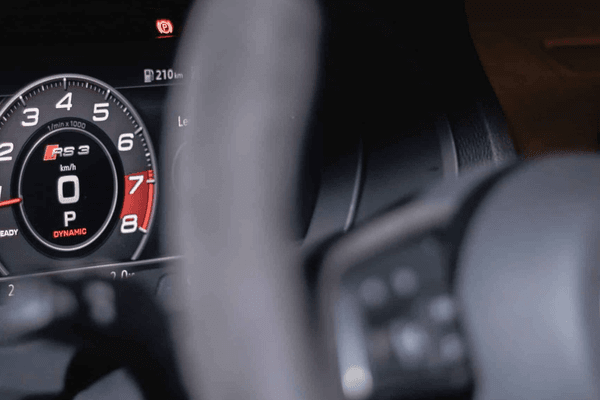
Share
Trading in your car can be a convenient stepping stone toward your next vehicle purchase, potentially saving you time and hassle compared to selling privately
With over 60% of new car purchases in Australia involving a trade-in, it’s a common path for upgrading your wheels. However, navigating the trade-in process requires understanding how dealerships operate and how to position yourself for the best possible outcome especially if your current car is still under finance.
Understanding car trade-in value
Before setting foot in a dealership, you should have a realistic understanding of what your car is worth in the current market.
Factors affecting your car’s trade-in value
The value of your trade-in isn’t arbitrary it’s influenced by several key factors that dealers consider when making an offer. Popular models with strong reputations for reliability typically command higher values in the Australian market. Your odometer reading plays a significant role too, with lower kilometres generally translating to better offers. The average Australian drives about 13,000km annually, so vehicles significantly above this benchmark may see reduced valuations.
Both cosmetic and mechanical condition significantly impact what dealers will offer. A well-maintained exterior free of dents and scratches, combined with a clean interior, signals to dealers that the car has been cared for. Perhaps even more valuable is a complete service history with records from authorised service centres, which provides confidence in the vehicle’s mechanical condition and can add considerable value to your trade-in.
Current market trends and consumer preferences also play a crucial role in valuation. For instance, fuel-efficient vehicles tend to command higher prices when petrol costs rise, while SUVs and 4WDs may see increased demand during certain seasons. Even your car’s colour can affect its value, with neutral tones like white, silver, and black typically holding broader appeal in the Australian market.
According to industry data, the average Australian car loses approximately 14% of its value in the first year and up to 60% after five years, though recent supply chain issues have altered this trajectory somewhat.
How to research your car’s value
Arm yourself with knowledge about your car’s worth before any dealership visit:
- Online valuation tools: Australian resources like RedBook, Glass’s Guide, and CarsGuide provide reliable estimates based on your car’s specifications and condition.
- Local market comparison: Search online marketplaces to see what similar vehicles are selling for in your area.
- Dealer quotes: Some dealers offer online valuation tools, or you can visit multiple dealerships for in-person assessments.
Keep in mind that trade-in values typically fall 10-15% below private sale prices, reflecting the dealer’s need to recondition the vehicle and make a profit on resale.
Trade-in vs. private sale comparison
While private sales generally yield higher returns, trade-ins offer significant advantages:
- Convenience: Trading in eliminates the need to advertise, screen buyers, and manage test drives.
- Time savings: The process can be completed in a single day rather than waiting weeks or months for a private buyer.
- Tax advantages: In most Australian states, you only pay stamp duty on the difference between your trade-in value and the new car’s price.
- Simplicity: The dealership handles the paperwork, including loan payoff if your car is financed.
Preparing your car for maximum trade-in value
Presentation matters when trading in your car. A vehicle that looks and functions well makes a better impression and typically receives higher offers.
Professional cleaning and detailing
Investing $150-300 in professional detailing can increase your car’s trade-in value by 5-10%. A thorough detail includes interior shampooing and conditioning, paint correction and polishing, engine bay cleaning, and wheel and tyre treatment. These services remove built-up grime and restore your car’s appearance, making it more attractive to dealers who know that first impressions matter to potential buyers.
If professional detailing isn’t in your budget, a thorough DIY clean covering the same areas can still make a significant difference. Focus on removing stains from upholstery, eliminating odours, and ensuring the exterior shines. Even small touches like applying tyre shine and cleaning glass surfaces can elevate your car’s presentation substantially.
Minor repairs worth making
When preparing for a trade-in, it’s important to be strategic about which repairs to undertake. Focus on cost-effective fixes that improve your car’s presentation without requiring significant investment. Replacing worn wiper blades, fixing minor scratches and stone chips, replacing burnt-out bulbs, and addressing any warning lights on the dashboard can all make positive impressions during the evaluation.
More extensive repairs rarely return their cost in a trade-in scenario, so weigh the investment carefully. For example, spending $2,000 on a major mechanical repair rarely adds $2,000 to your trade-in value. Instead, be transparent about known issues and understand that dealers have in-house capabilities to address these problems more cost-effectively than you can as an individual.
Documentation preparation
Organised documentation demonstrates that you’ve been a responsible owner:
- Service records: Complete maintenance history showing regular servicing
- Registration papers: Current registration certificate
- Warranty information: Any remaining warranty documentation
- Modifications: Records of any approved modifications
- Owner’s manual: The original manual and logbooks
Pre-trade-in inspection
Consider getting an independent inspection report before trading in. This provides:
- Transparency about your car’s condition
- Leverage against lowball offers
- Confidence in negotiating
- Identification of minor issues you might fix
Removing personal items and accessories
Before the final handover:
- Clear out personal belongings
- Remove toll transponders and parking permits
- Delete personal data from connected systems
- Decide whether to remove aftermarket accessories (sometimes these are more valuable sold separately)
Trading in a car that’s still under finance
Approximately 45% of trade-ins still have financing outstanding, so this situation is common and dealerships are well-versed in handling it.
Understanding your current loan situation
Before approaching any dealership, understand where you stand financially:
- Contact your lender: Request a payout figure (the amount needed to clear the loan)
- Calculate your equity position: Compare your car’s estimated value to the payout figure
- Positive equity: Your car is worth more than you owe
- Negative equity: You owe more than your car is worth (also known as being “upside-down”)
Process for trading in a financed car
Trading in a car that’s still under finance involves additional considerations beyond a standard trade-in. First, you’ll need to contact your lender to notify them of your intention and request a current payout figure. This amount may differ from what’s shown on your last statement due to interest calculations and early termination fees.
When you visit the dealership, bring your loan account number, lender contact details, and a recent loan statement. The dealer will need this information to verify the outstanding balance and arrange the loan settlement. Most dealerships have established processes for handling financed trade-ins and will contact your lender directly once a deal is agreed upon.
The dealership effectively takes over responsibility for paying out your loan as part of the trade-in transaction. If your car has positive equity, the excess value after paying off the loan will be applied to your new purchase. This streamlined process eliminates the need for you to settle the loan separately, making the trade-in particularly convenient for financed vehicles.
Managing negative equity
Negative equity occurs when you owe more on your car than it’s currently worth, a common situation due to rapid depreciation in early loan years. If you find yourself in this position, you have several options to consider, each with different financial implications.
Paying the difference upfront is the cleanest solution financially if you have the funds available. For example, if your car is valued at $15,000 but you owe $18,000, you could pay the $3,000 difference to clear the loan completely. This approach prevents carrying debt from your old vehicle into your new purchase.
Many buyers choose to roll the negative equity into a new loan, where the dealer adds the outstanding balance to your new car financing. While this requires no immediate out-of-pocket expense, it increases your borrowing amount and monthly payments. On a $30,000 new car purchase with $3,000 in negative equity, you’d actually be financing $33,000, potentially paying interest on that additional amount for years.
If your situation allows, delaying the trade-in until you reach positive equity can be financially prudent. Continuing to make payments while your loan balance decreases eventually tips the scales in your favour, especially if you can make additional payments to accelerate this process.
Financial advisors typically recommend avoiding rolling over negative equity if possible, as it can create a cycle of growing debt. According to consumer data, vehicles with negative equity rolled into new loans are three times more likely to experience the same situation in the future.
Tips for improving your position
If your car has negative equity but you need to trade it in:
- Choose a new vehicle with significant incentives or discounts
- Consider a less expensive new vehicle to offset the negative equity
- Shop during end-of-financial-year sales when dealers may be more accommodating
- Extend your loan term (though this increases total interest paid)
- Make a larger down payment on the new vehicle
The trade-in process
Understanding the typical workflow helps you navigate the process more confidently.
Researching dealerships
Not all dealerships offer the same trade-in values:
- Dealers specialising in your car’s make may offer better values
- Larger dealer networks sometimes have more flexibility
- The dealership where you purchased your car might provide loyalty considerations
- Online reviews can reveal how other customers experienced the trade-in process
Making appointments for valuation
Schedule appointments with multiple dealers:
- Mid-week mornings typically have less foot traffic
- Avoid month-end if possible (when dealers may be focused on hitting targets)
- Request the used car manager be present if possible
- Allow sufficient time (30-60 minutes) for a thorough evaluation
The inspection process
A typical dealer inspection includes:
- Exterior and interior condition assessment
- Short test drive to evaluate mechanical condition
- Scanning for diagnostic trouble codes
- Checking for accident history
- Odometer verification
- Option and feature confirmation
Be honest about known issues---they will be discovered during inspection, and transparency builds trust.
Receiving and evaluating offers
Once inspected, the dealer will present a trade-in offer:
- Request a written quote with breakdown
- Compare to your research values
- Understand any conditions attached to the offer
- Ask about the reasoning behind the valuation
Remember that initial offers are typically starting points for negotiation.
Separating trade-in and purchase negotiations
A key strategy for maximising your outcome:
- Negotiate the trade-in value before discussing the new car purchase
- Alternatively, negotiate the new car price first, then introduce the trade-in
- Avoid letting the dealer combine the discussions, which can obscure the true figures
- Get trade-in offers from dealers where you’re not purchasing to establish baseline values
Paperwork and finalisation
Once agreed, expect to complete:
- Vehicle transfer forms
- Loan payoff authorisation (if applicable)
- Warranty cancellations for the traded vehicle
- Registration transfer documents
- Receipt for the trade-in value
Negotiation strategies for better trade-in deals
Effective negotiation can significantly improve your trade-in outcome:
Timing your trade-in
Market considerations that affect your leverage:
- End of month/quarter when dealers need to hit targets
- New model releases (which may decrease older model values)
- Seasonal factors (convertibles in summer, 4WDs before winter)
- Current inventory levels at the dealership
Using multiple quotes as leverage
Consumer advocates recommend getting at least three quotes before accepting a trade-in offer:
- Present competing offers to your preferred dealer
- Be prepared to walk away if the deal isn’t right
- Consider online car buying services as additional comparison points
- Don’t reveal your bottom-line acceptance figure
Negotiation tactics that work
The way you approach the negotiation can significantly impact your trade-in value. When the dealer presents their initial offer, try beginning with silence - this simple tactic often leads them to fill the void with a better offer or justification. Rather than rejecting an offer outright, use phrases like “I need to get closer to $X based on my research” or “Based on the quotes I’ve received elsewhere, I was expecting more in the range of $X.”
Focus the conversation on the total transaction rather than just the trade-in value. A dealer might be more flexible on trade-in value if you’re purchasing a high-margin vehicle or additional products like extended warranties. Throughout the negotiation, highlight your car’s positive features and maintenance history, especially if you’ve kept meticulous service records or recently replaced major components like tyres or the timing belt.
Show that you’re a serious buyer ready to close a deal today, but also demonstrate that you’ve done your homework and won’t accept a significantly below-market offer. The most successful negotiations maintain a respectful, professional tone while firmly advocating for fair value based on market research.
Common dealership strategies to be aware of
Recognizing common dealership tactics helps you maintain your advantage during negotiations. Many dealers focus discussions solely on monthly payment rather than total cost, obscuring the actual trade-in value and purchase price. This approach can lead to paying more over the life of your loan despite an apparently affordable monthly commitment.
You might encounter the classic “talk to the manager” approach, where your salesperson leaves to get approval for your offer. This strategy is designed to wear down resistance and can extend the negotiation process significantly. Similarly, some dealers may initially agree on a new car price, only to lowball the trade-in afterward, effectively changing the terms of the deal.
Watch for last-minute fees or costs that weren’t initially disclosed, which can erode the value of your trade-in offer. These might include administration fees, documentation charges, or preparation costs. Always insist on reviewing all paperwork thoroughly, resisting any pressure to rush through signing. A legitimate dealer will respect your need to understand all aspects of the transaction before committing.
When to walk away
Recognise situations where it’s better to decline and seek alternatives:
- Offers significantly below market value (more than 15%)
- Pressure tactics or high-stress sales environments
- Unwillingness to put offers in writing
- Constantly changing terms
- Your gut feeling says the deal isn’t right
Financing your next vehicle
Trading in affects your financing options and requirements:
Understanding your options
Different financing approaches offer varying advantages:
- Dealer finance: Convenient but not always the most competitive rates
- Bank loans: Often lower rates but less integrated with the purchase process
- Credit unions: Frequently offer member benefits and competitive rates
- Online lenders: Can provide quick approvals and competitive rates
- Novated leases: Potential tax advantages for some buyers
Working with finance brokers
A finance broker can help navigate multiple options:
- Access to various lenders and loan products
- Assistance with loan structuring for trade-ins with negative equity
- Expert advice on terms and conditions
- Pre-approval to strengthen your negotiating position
Dealership financing vs. bank loans
Key differences to consider:
- Dealerships often receive commissions from finance providers
- Banks may offer lower rates but stricter approval criteria
- Dealership finance can include “balloon payments” to lower monthly payments
- Bank loans typically have more transparent fee structures
Impact of trade-in on financing terms
How your trade-in influences financing:
- Positive equity reduces the amount you need to finance
- Negative equity increases your loan-to-value ratio
- Higher loan-to-value ratios may trigger higher interest rates
- Trade-in value affects your down payment requirements
Interest rates and loan term considerations
Balancing monthly affordability with total cost:
- Longer terms reduce monthly payments but increase total interest paid
- Current Australian car loan rates range from about 3.5% to 14% depending on credit profile
- Secured loans (where the car serves as collateral) typically offer lower rates
- Fixed vs. variable rate considerations
Avoiding common trade-in mistakes
Learn from others’ experiences to optimise your outcome:
Not researching value beforehand
Walking into a dealership without knowing your car’s worth puts you at a significant disadvantage. Use multiple valuation sources to establish a realistic range.
Focusing only on the trade-in value
The overall transaction matters more than any single component. A great trade-in offer might be offset by a higher new car price, so focus on the changeover amount---the difference between your new car price and trade-in value. Consider all costs including fees, insurance, and stamp duty to understand the complete financial picture. A dealer offering $500 more for your trade-in but charging $1,000 in additional fees ultimately leaves you worse off.
Neglecting to shop around
Comparing offers from multiple dealerships typically yields better results. Values can vary by thousands between dealers based on their current inventory needs, local market conditions, and sales strategies. Some dealers specialise in certain types of trade-ins or have stronger demand for specific makes and models. Taking the time to visit at least three dealerships often results in significantly better offers and gives you concrete numbers to use during negotiations.
Overlooking the fine print
Details matter in trade-in agreements. Watch for conditional offers that can change after a more detailed inspection, hidden fees that reduce the effective trade-in value, financing terms that change at the last minute, or warranty implications that weren’t clearly disclosed. Always read the entire contract before signing, paying special attention to any conditions or contingencies that could affect the final trade-in value or overall transaction.
Rushing the process
Patience typically yields better results:
- Take time to gather multiple offers
- Review all paperwork carefully
- Don’t feel pressured by “today only” offers
- Sleep on major decisions when possible
Trading in your car can be a straightforward path to your next vehicle, particularly when you approach the process with knowledge and preparation. By understanding your car’s value, preparing it properly, navigating finance considerations, and negotiating effectively, you can achieve a fair outcome that aligns with your needs and budget.
Remember that a successful trade-in isn’t just about getting the highest possible price—it’s about creating a total transaction that works for your situation while minimising stress and hassle. Take your time, do your homework, and don’t be afraid to walk away if a deal doesn’t feel right.
With the right approach, trading in your current car can be the first step toward driving away in a vehicle that better meets your needs without unnecessary financial strain.
Further questions
Can I trade in my car if I still owe money on it?
How do I know if my car has positive or negative equity?
Should I detail my car before trading it in?
Is it better to sell privately than trade in?
When is the best time to trade in my car?
This is general information only and is subject to change at any given time. Your complete financial situation will need to be assessed before acceptance of any proposal or product.





